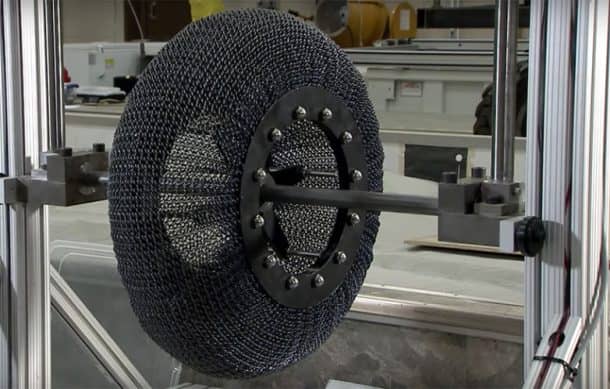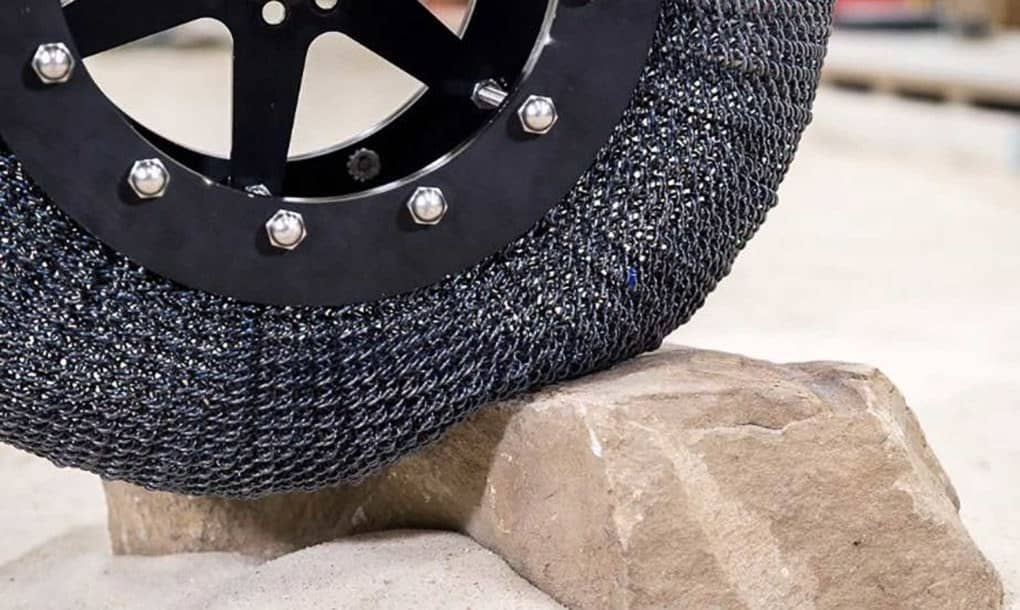NASA is trying to reinvent the wheel, in literal and figurative manner. While the probes and satellites of NASA are busy discovering new corners of the space, the engineers and scientists are trying to create a perfect combination of wheel and tire. The latest innovation is based on an idea that has been here for years i.e to have an airless tire. The airless tire will use shape-memory alloy as radial stiffening elements that will maximize the advantages and capabilities of the tire. The name given to the innovative tire is Superelastic Tire.

This development is also a result of an issue that happened with its previous tire while NASA was carrying out some testing for motorhome-size lunar rovers, in the late 2000s. In that era, the airless spring tires used spring steel. Even though it was working well, it was still vulnerable to plastic deformation and dents when a heavy load was put. A visit from material scientist Santa Padula to the Simulated Lunar Operations (SLOPE) lab at NASA’s Glenn Research Center made the revolutionary merging of technology possible. Padula suggested using shape-memory alloys in the form of radial stiffeners on the tire instead of using spring steel. The material used for this technology is an alloy based on stoichiometric nickel titanium.
The other material atoms when stretched, reach the point of breaking when they take on the stress of heavy loads. The nickel-titanium alloy rearranges itself on the atomic level and can regain its shape once the load is taken off. According to Padula, this technology will allow 30% more deformation without making any permanent changes or damage to the alloy. The memory alloys can take up to 10% of the ‘reversible strain’ as compared to 0.3 to 0.5 % the spring steels or composites are able to tackle. The prototype of the tire looks like a pliable chain mail. The advantages of this type of tire are very obvious. It not only reduces the potential issues with temperature and pressure which can affect gas-filled tires, It also removes the possibility of deflation. The prototype also removes the need for an inner frame, hence reducing the weight of the tires.
NASA says that the alloy also allows the control of tire’s stiffness which means that the rover can be adjusted for different loads on different types of terrains. This will also come in handy while the rover moves on the surface of different planets with different gravity. These prototypes were created for rovers to be used on the missions to Mars. NASA says that the technology can also be used in the real world applications on the earth as well. Traction, speed capability and cost would be major issues with the tire. The commercial vehicles that travel at low speeds and operate off-pavement can also benefit from it. Let’s see how the general public can benefit from this new innovation. Fingers crossed!


